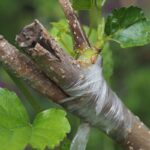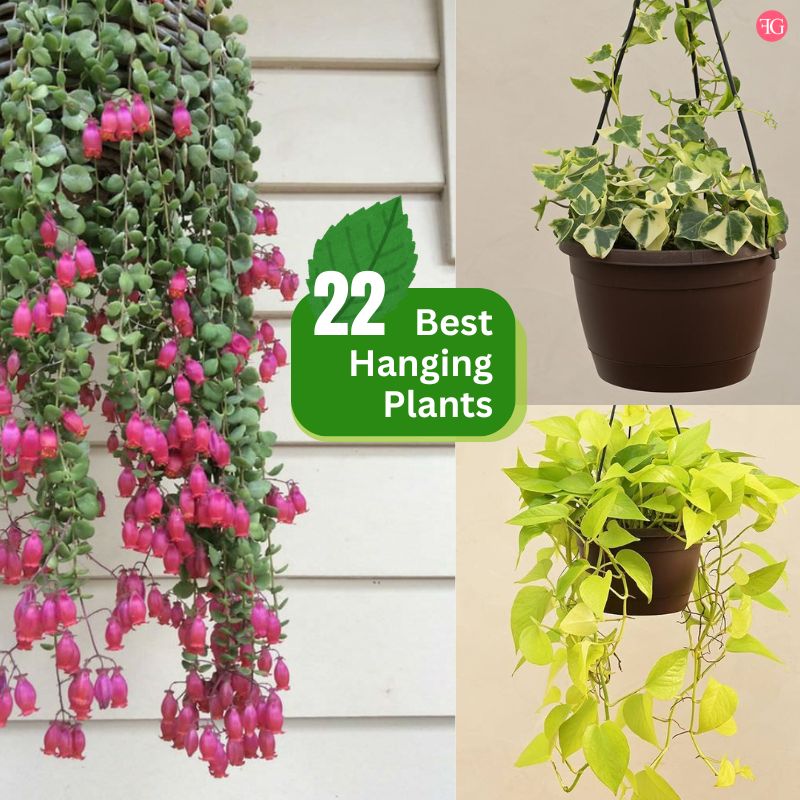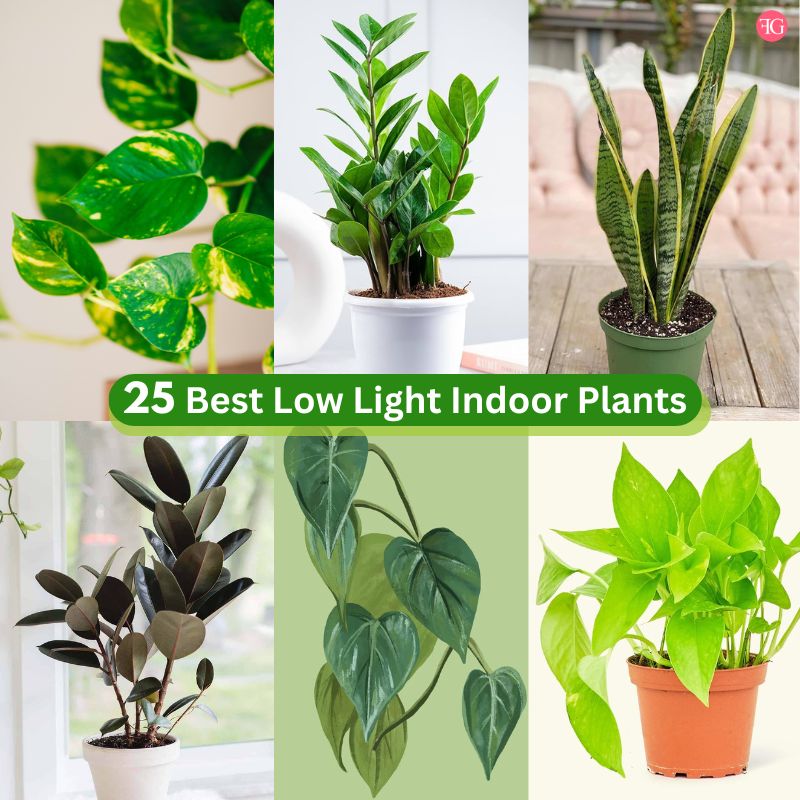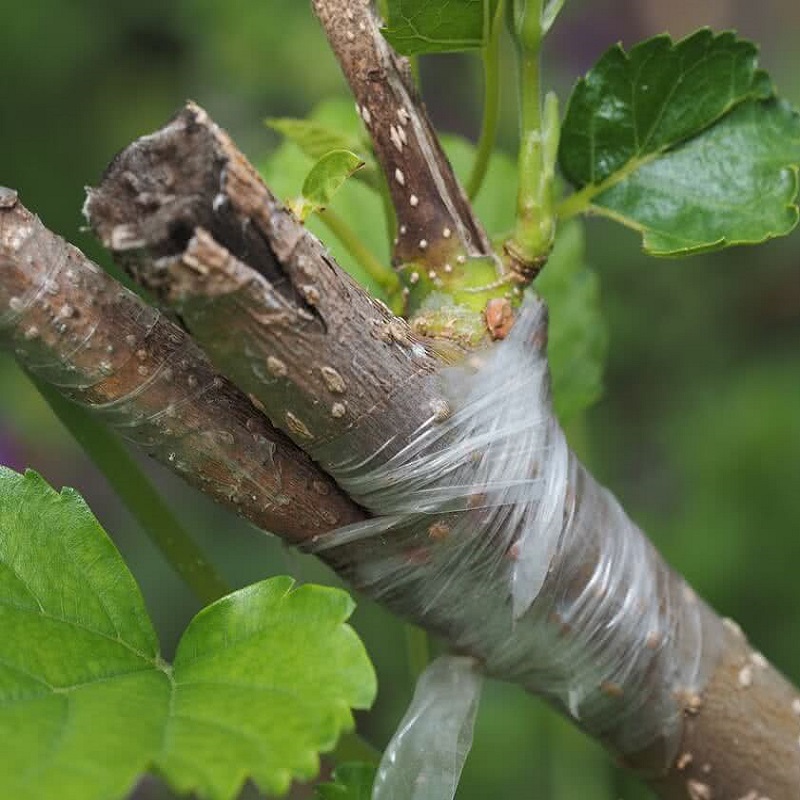19 Large Indoor Plants To Elevate Your Space
Transform your home with these stunning large indoor plants that make a bold statement
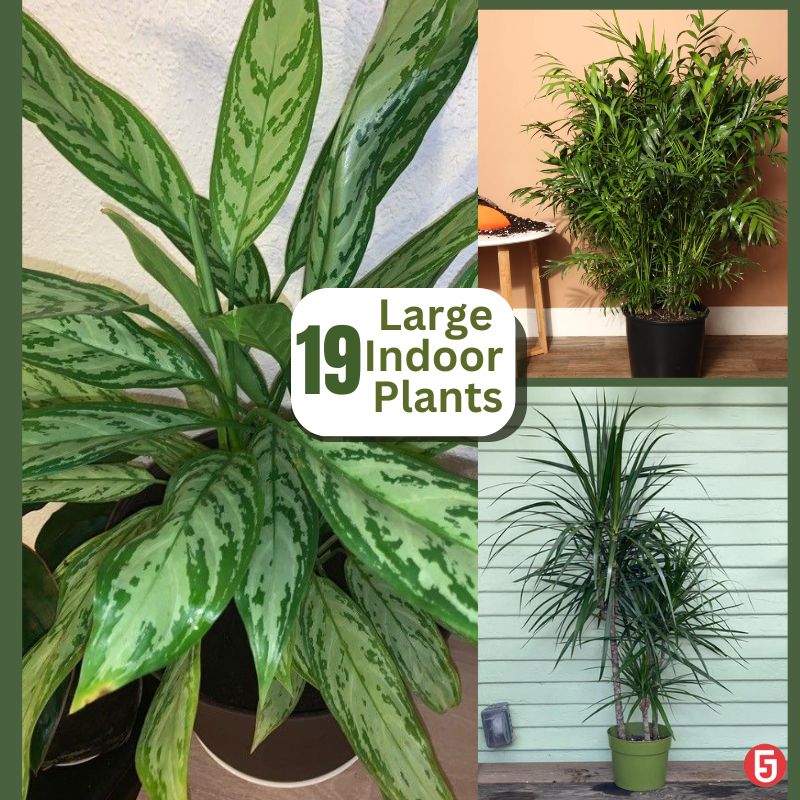
Bringing nature indoors not only adds aesthetic appeal but also enhances the air quality and creates a calming environment. Large indoor plants are especially popular for their ability to make a bold statement in any room. Here’s a detailed guide to 30 stunning large indoor plants that can transform your home.
Incorporating large indoor plants into your home can create a lush, vibrant atmosphere that mimics the natural world. These impressive plants not only serve as eye-catching focal points but also help to purify the air and add a sense of tranquility to your living space. Whether you’re looking to fill a spacious corner or add a touch of greenery to a large room, the following list of 30 large indoor plants offers a variety of options to suit your style and needs. Discover how these magnificent plants can elevate your interior design while contributing to a healthier, more serene home environment.
19 Large Indoor Plants For Your Space
1. Fiddle Leaf Fig

Scientific name: Ficus lyrata
Family: Moraceae
Best temperature: 60-75°F (15-24°C)
Best month: Spring
Suitable potting mixture: Well-draining, loamy soil with organic matter
Propagation Method: Fiddle Leaf Figs can be propagated by stem cuttings. Choose a healthy stem with a few leaves, cut it just below a node, and place it in water or soil to root.
Maintenance Tips: Fiddle Leaf Figs prefer bright, indirect light and need regular watering, allowing the top inch of soil to dry out between waterings. Rotate the plant periodically to ensure even growth.
Common Issues: Brown spots or edges on leaves can indicate inconsistent watering or poor humidity. Drooping leaves may result from overwatering or poor drainage. Ensure proper care to avoid these issues.
Best Space: This plant is ideal for large living rooms, entryways, or offices where it can receive plenty of indirect sunlight. Its tall stature and large, glossy leaves make it a striking focal point.
Description: The Fiddle Leaf Fig is beloved for its large, violin-shaped leaves that add a touch of elegance to any space. With the right care, it can grow several feet tall, creating a dramatic effect in your home. It’s important to provide it with the right environment, including bright, indirect light and regular watering, to keep it healthy and vibrant.
Additional Info: Though it can be somewhat finicky, the Fiddle Leaf Fig rewards attentive care with lush growth. Be sure to dust the leaves regularly to keep them shiny and free of pests.
2. Bird of Paradise

Scientific name: Strelitzia reginae
Family: Strelitziaceae
Best temperature: 65-70°F (18-21°C)
Best month: Summer
Suitable potting mixture: Well-draining soil mix with perlite or sand
Propagation Method: Bird of Paradise can be propagated through division. Carefully separate the rhizomes with a sharp knife, ensuring each section has roots and a few leaves.
Maintenance Tips: This plant thrives in bright, indirect sunlight but can tolerate some direct sun. Water thoroughly, allowing the top inch of soil to dry out between waterings. Increase humidity during winter months.
Common Issues: Leaf curling or browning tips can indicate low humidity or underwatering. Yellow leaves may result from overwatering or poor drainage.
Best Space: Perfect for bright living rooms or sunrooms where it can receive ample sunlight. Its large, banana-like leaves create a tropical atmosphere, adding a vacation-like vibe to your home.
Description: Bird of Paradise is a dramatic, eye-catching plant known for its large, lush leaves and unique, crane-like flowers (though it rarely blooms indoors). With its exotic appearance, it brings a tropical flair to your indoor spaces. It’s a statement piece that can transform the look of a room with its bold presence.
Additional Info: Regular pruning and wiping down the leaves will keep this plant looking its best. Consider placing it near a window where it can bask in the sun’s rays.
3. Monstera Deliciosa

Scientific name: Monstera deliciosa
Family: Araceae
Best temperature: 65-85°F (18-29°C)
Best month: Spring
Suitable potting mixture: Well-draining, peat-based mix
Propagation Method: Propagate Monstera by stem cuttings with at least one node. Place the cutting in water or directly into soil, and roots will begin to develop within a few weeks.
Maintenance Tips: Monstera prefers bright, indirect light but can adapt to lower light conditions. Water when the top few inches of soil are dry, and provide support with a moss pole as it grows.
Common Issues: Yellowing leaves may indicate overwatering, while brown tips can result from low humidity. Adjust care routines accordingly.
Best Space: Ideal for spacious living rooms or bedrooms where it can climb or spread out. Its large, fenestrated leaves add a touch of the jungle to any interior, making it a popular choice for modern homes.
Description: Monstera Deliciosa, also known as the Swiss Cheese Plant, is famous for its large, perforated leaves that bring a tropical feel indoors. It’s a fast grower that can reach impressive heights, making it perfect for filling empty corners or as a statement plant.
Additional Info: Monstera is relatively low-maintenance and can adapt to various indoor conditions, making it a great choice for both novice and experienced plant owners.
4. Rubber Plant

Scientific name: Ficus elastica
Family: Moraceae
Best temperature: 60-85°F (16-29°C)
Best month: Spring
Suitable potting mixture: Well-draining, loamy soil
Propagation Method: Rubber plants can be propagated by stem cuttings. Take a healthy stem with a few leaves, cut just below a node, and place it in water or soil to root.
Maintenance Tips: Rubber plants prefer bright, indirect light and need to be watered regularly, allowing the top inch of soil to dry out between waterings. Dust the leaves periodically to keep them healthy.
Common Issues: Yellow leaves can indicate overwatering, while dropping leaves may result from low light or temperature fluctuations. Adjust care to suit its needs.
Best Space: Ideal for bright living rooms, offices, or entryways where it can stand out. Its large, glossy leaves and tall stature make it a bold addition to any interior.
Description: The Rubber Plant is a popular choice for its large, shiny leaves that add a touch of green luxury to your home. With its robust growth habit, it can quickly fill up empty spaces, creating a lush, vibrant atmosphere indoors.
Additional Info: Regular pruning will keep the plant bushy and full. It’s also known for its air-purifying qualities, making it a healthy choice for your indoor environment.
5. Kentia Palm

Scientific name: Howea forsteriana
Family: Arecaceae
Best temperature: 65-85°F (18-29°C)
Best month: Spring
Suitable potting mixture: Well-draining, sandy soil mix
Propagation Method: Kentia Palms are typically propagated by seed, though this is a slow process. It’s often easier to purchase a mature plant.
Maintenance Tips: Kentia Palms thrive in bright, indirect light but can tolerate lower light conditions. Water when the top inch of soil is dry and mist regularly to maintain humidity.
Common Issues: Brown tips or edges on leaves may indicate low humidity or irregular watering. Ensure consistent care to avoid these problems.
Best Space: Perfect for large living rooms or offices where its tall, arching fronds can create a tropical ambiance. It’s a versatile plant that can adapt to various lighting conditions, making it ideal for many indoor spaces.
Description: The Kentia Palm is a graceful plant with slender, arching fronds that bring a sense of elegance and serenity to indoor spaces. It’s a slow grower, making it a long-term investment for your home decor. Its tolerance for lower light and easy-going nature make it a favorite among indoor gardeners.
Additional Info: This palm is relatively low-maintenance and can thrive for years with minimal care. It’s a great choice for adding height and texture to your indoor plant collection.
6. Dracaena Marginata

Scientific name: Dracaena marginata
Family: Asparagaceae
Best temperature: 70-80°F (21-27°C)
Best month: Spring
Suitable potting mixture: Well-draining soil with added perlite for aeration
Propagation Method: Dracaena Marginata can be propagated by stem cuttings. Cut a healthy stem and plant it directly in soil, or place it in water until roots develop.
Maintenance Tips: This plant prefers bright, indirect light but can tolerate low light. Water when the top inch of soil is dry, and avoid overwatering to prevent root rot.
Common Issues: Yellowing or browning leaves may indicate overwatering or poor light conditions. Adjust care routines to keep the plant healthy.
Best Space: Ideal for offices, living rooms, or bedrooms where its spiky, sword-like leaves can add a touch of modern style. Its tall, narrow shape makes it a good choice for small spaces.
Description: Dracaena Marginata, also known as the Dragon Tree, is a popular indoor plant known for its striking, spiky leaves that add a contemporary flair to any room. It’s a resilient plant that can adapt to various indoor conditions, making it a great choice for busy households.
Additional Info: This plant is relatively low-maintenance and can thrive in both bright and low light, making it a versatile addition to any indoor space. Regular pruning will help maintain its shape and encourage new growth.
7. Majesty Palm

Scientific name: Ravenea rivularis
Family: Arecaceae
Best temperature: 65-85°F (18-29°C)
Best month: Spring
Suitable potting mixture: Well-draining soil with added peat moss for moisture retention
Propagation Method: Majesty Palms are typically propagated by seed, though this is a slow process. It’s often easier to purchase a mature plant.
Maintenance Tips: Majesty Palms prefer bright, indirect light and need high humidity to thrive. Water regularly, keeping the soil moist but not waterlogged. Mist frequently to increase humidity.
Common Issues: Browning tips on leaves may indicate low humidity, while yellowing leaves can result from overwatering. Adjust care routines accordingly.
Best Space: Perfect for living rooms, sunrooms, or offices where it can receive plenty of indirect sunlight. Its tall, graceful fronds create a tropical atmosphere, making it a popular choice for adding a lush, green presence indoors.
Description: The Majesty Palm is a popular indoor palm known for its elegant, feathery fronds that add a touch of the tropics to any space. It’s a fast grower that can reach impressive heights, making it a great choice for filling empty corners or adding height to your indoor plant collection.
Additional Info: Regular pruning and misting will keep this plant looking its best. It’s also known for its air-purifying qualities, making it a healthy choice for your indoor environment.
8. Areca Palm

Scientific name: Dypsis lutescens
Family: Arecaceae
Best temperature: 65-75°F (18-24°C)
Best month: Spring
Suitable potting mixture: Well-draining, sandy soil mix
Propagation Method: Areca Palms can be propagated by division. Carefully separate the clumps with roots intact and replant them in fresh soil.
Maintenance Tips: Areca Palms thrive in bright, indirect light but can tolerate lower light conditions. Water when the top inch of soil is dry, and mist regularly to maintain humidity.
Common Issues: Yellowing leaves may indicate overwatering, while brown tips can result from low humidity. Ensure consistent care to avoid these problems.
Best Space: Ideal for large living rooms, offices, or sunrooms where its tall, arching fronds can create a tropical ambiance. It’s a versatile plant that can adapt to various lighting conditions, making it ideal for many indoor spaces.
Description: The Areca Palm is a popular indoor plant known for its feathery, arching fronds that bring a sense of the tropics indoors. It’s a slow grower, making it a long-term investment for your home decor. Its tolerance for lower light and easy-going nature make it a favorite among indoor gardeners.
Additional Info: This palm is relatively low-maintenance and can thrive for years with minimal care. It’s a great choice for adding height and texture to your indoor plant collection.
9. Corn Plant

Scientific name: Dracaena fragrans
Family: Asparagaceae
Best temperature: 65-75°F (18-24°C)
Best month: Spring
Suitable potting mixture: Well-draining, loamy soil
Propagation Method: Corn Plants can be propagated by stem cuttings. Cut a healthy stem with a few leaves, plant it directly in soil, and keep it in a warm, humid environment until roots develop.
Maintenance Tips: This plant prefers bright, indirect light but can adapt to lower light conditions. Water when the top inch of soil is dry, and mist regularly to maintain humidity.
Common Issues: Yellowing leaves may indicate overwatering, while brown tips can result from low humidity. Adjust care routines accordingly.
Best Space: Perfect for large living rooms, offices, or entryways where its tall, upright growth can add a touch of green to your space. Its long, arching leaves create a lush, tropical atmosphere.
Description: The Corn Plant, also known as Dracaena Fragrans, is a popular indoor plant known for its long, arching leaves that add a touch of the tropics to any space. It’s a resilient plant that can adapt to various indoor conditions, making it a great choice for busy households.
Additional Info: This plant is relatively low-maintenance and can thrive in both bright and low light, making it a versatile addition to any indoor space. Regular pruning will help maintain its shape and encourage new growth.
10. Snake Plant

Scientific name: Sansevieria trifasciata
Family: Asparagaceae
Best temperature: 60-85°F (16-29°C)
Best month: Spring
Suitable potting mixture: Well-draining, sandy soil mix
Propagation Method: Snake Plants can be propagated by division or leaf cuttings. Cut a healthy leaf into sections, plant them in soil, and keep them in a warm, humid environment until roots develop.
Maintenance Tips: This plant prefers bright, indirect light but can tolerate low light conditions. Water when the top inch of soil is dry, and avoid overwatering to prevent root rot.
Common Issues: Yellowing leaves may indicate overwatering, while brown tips can result from low humidity. Adjust care routines accordingly.
Best Space: Ideal for offices, living rooms, or bedrooms where its tall, upright leaves can add a touch of modern style. Its narrow shape makes it a good choice for small spaces.
Description: The Snake Plant, also known as Sansevieria or Mother-in-law’s Tongue, is a popular indoor plant known for its tall, upright leaves that add a contemporary flair to any room. It’s a resilient plant that can adapt to various indoor conditions, making it a great choice for busy households.
Additional Info: This plant is relatively low-maintenance and can thrive in both bright and low light, making it a versatile addition to any indoor space. Regular pruning will help maintain its shape and encourage new growth.
11. ZZ Plant

Scientific name: Zamioculcas zamiifolia
Family: Araceae
Best temperature: 60-75°F (16-24°C)
Best month: Spring
Suitable potting mixture: Well-draining, sandy soil mix
Propagation Method: ZZ Plants can be propagated by division or leaf cuttings. Take a healthy leaf cutting or divide the root rhizome, and plant it in soil. Keep it in a warm, indirect light environment until roots develop.
Maintenance Tips: ZZ Plants thrive in low to bright, indirect light and are extremely drought-tolerant. Water when the soil is completely dry, as this plant can survive long periods without water.
Common Issues: Yellowing leaves typically indicate overwatering, while drooping leaves may result from prolonged dryness. Adjust watering accordingly.
Best Space: Ideal for offices, living rooms, or bedrooms, where its thick, glossy leaves can add a touch of greenery without requiring much maintenance. It’s perfect for spaces with low light or those who may forget to water regularly.
Description: The ZZ Plant is a popular indoor plant known for its shiny, deep green leaves that add a modern touch to any space. It’s a hardy plant that requires minimal care, making it an excellent choice for beginners or busy individuals.
Additional Info: This plant is almost indestructible and can tolerate neglect, making it one of the most low-maintenance indoor plants available. It’s also known for its air-purifying qualities, which contribute to a healthier indoor environment.
12. Aloe Vera

Scientific name: Aloe barbadensis miller
Family: Asphodelaceae
Best temperature: 55-80°F (13-27°C)
Best month: Spring
Suitable potting mixture: Well-draining, sandy soil mix
Propagation Method: Aloe Vera can be propagated by removing offsets (pups) from the base of the plant. Plant them in a small pot with well-draining soil, and keep them in a sunny spot.
Maintenance Tips: Aloe Vera prefers bright, indirect light and minimal watering. Allow the soil to dry out completely between waterings, and water sparingly during winter.
Common Issues: Overwatering can lead to root rot, so ensure the soil is well-draining and not left soggy. Brown or mushy leaves are also signs of overwatering.
Best Space: Perfect for kitchens, bathrooms, or windowsills, where it can receive bright, indirect light. Its medicinal properties also make it a handy plant to have around the house.
Description: Aloe Vera is a popular succulent known for its spiky, fleshy leaves that store water. It’s easy to care for and has a wide range of medicinal uses, making it a beneficial addition to any indoor plant collection.
Additional Info: In addition to its ornamental value, Aloe Vera gel is known for its healing properties, especially for soothing burns and skin irritations. It’s a versatile plant that’s as useful as it is attractive.
13. Pothos

Scientific name: Epipremnum aureum
Family: Araceae
Best temperature: 60-85°F (16-29°C)
Best month: Spring
Suitable potting mixture: Well-draining, peat-based soil mix
Propagation Method: Pothos can be easily propagated by stem cuttings. Cut a section of stem with a few leaves, place it in water or soil, and keep it in bright, indirect light until roots develop.
Maintenance Tips: Pothos thrives in low to bright, indirect light. Water when the top inch of soil is dry, and mist occasionally to maintain humidity.
Common Issues: Yellowing leaves can indicate overwatering, while wilting may result from underwatering. Adjust watering habits accordingly.
Best Space: Ideal for hanging planters in living rooms, bathrooms, or kitchens, where its trailing vines can add a lush, green touch to your space. It’s a versatile plant that adapts well to various lighting conditions.
Description: Pothos is a popular indoor plant known for its trailing vines and heart-shaped leaves, which come in various shades of green and variegation. It’s an easy-to-care-for plant that’s perfect for beginners.
Additional Info: Pothos is also known as the “Devil’s Ivy” because it can thrive in low light and can be difficult to kill. It’s a great choice for anyone looking to add greenery to their home without much effort.
14. Peace Lily

Scientific name: Spathiphyllum wallisii
Family: Araceae
Best temperature: 65-80°F (18-27°C)
Best month: Spring
Suitable potting mixture: Well-draining, peat-based soil mix
Propagation Method: Peace Lilies can be propagated by division. Carefully separate the clumps with roots intact and replant them in fresh soil.
Maintenance Tips: Peace Lilies thrive in bright, indirect light but can tolerate lower light conditions. Water when the top inch of soil is dry, and mist regularly to maintain humidity.
Common Issues: Yellowing leaves may indicate overwatering, while brown tips can result from low humidity. Ensure consistent care to avoid these problems.
Best Space: Perfect for living rooms, bedrooms, or offices, where its elegant white blooms can brighten up the space. It’s a popular plant for adding a touch of class and elegance to any room.
Description: The Peace Lily is a popular indoor plant known for its striking white flowers and dark green leaves. It’s a low-maintenance plant that’s also known for its air-purifying qualities, making it a healthy choice for your indoor environment.
Additional Info: Peace Lilies are sensitive to cold drafts, so keep them away from windows and doors that may let in cold air. They are also known to be toxic to pets, so place them out of reach of curious animals.
15. Spider Plant

Scientific name: Chlorophytum comosum
Family: Asparagaceae
Best temperature: 55-80°F (13-27°C)
Best month: Spring
Suitable potting mixture: Well-draining, peat-based soil mix
Propagation Method: Spider Plants can be propagated by removing the plantlets (babies) that form on the ends of the long stems. Plant them in soil, and they will root quickly.
Maintenance Tips: Spider Plants prefer bright, indirect light but can adapt to lower light conditions. Water when the top inch of soil is dry, and mist occasionally to maintain humidity.
Common Issues: Brown tips can result from low humidity or fluoride in tap water. Use filtered water and increase humidity to prevent this issue.
Best Space: Ideal for hanging planters in kitchens, bathrooms, or living rooms, where its arching leaves and cascading plantlets can add a touch of greenery. It’s a versatile plant that’s easy to care for.
Description: The Spider Plant is a popular indoor plant known for its long, arching leaves and its ability to produce small plantlets, or “spiders,” that dangle from the mother plant. It’s an excellent choice for beginners and is known for its air-purifying qualities.
Additional Info: Spider Plants are non-toxic and safe for pets, making them a great choice for households with animals. They’re also known for their ability to adapt to various lighting conditions, making them one of the most versatile indoor plants.
16. Chinese Evergreen

Scientific name: Aglaonema commutatum
Family: Araceae
Best temperature: 65-80°F (18-27°C)
Best month: Spring
Suitable potting mixture: Well-draining, peat-based soil mix
Propagation Method: Chinese Evergreens can be propagated by division or stem cuttings. Separate the clumps or cut a healthy stem with a few leaves, and plant it in fresh soil.
Maintenance Tips: This plant prefers bright, indirect light but can adapt to lower light conditions. Water when the top inch of soil is dry, and mist regularly to maintain humidity.
Common Issues: Yellowing leaves may indicate overwatering, while brown tips can result from low humidity. Adjust care routines accordingly.
Best Space: Perfect for offices, living rooms, or bedrooms, where its colorful leaves can add a touch of tropical beauty. It’s a hardy plant that’s perfect for beginners.
Description: The Chinese Evergreen is a popular indoor plant known for its colorful, patterned leaves that can brighten up any indoor space. It’s a low-maintenance plant that’s perfect for adding a touch of the tropics to your home.
Additional Info: Chinese Evergreens are known for their air-purifying qualities, making them a healthy choice for your indoor environment. They’re also relatively easy to care for, making them a great choice for anyone looking to add greenery to their home.
17. Yucca Plant

Scientific name: Yucca elephantipes
Family: Asparagaceae
Best temperature: 60-80°F (16-27°C)
Best month: Spring
Suitable potting mixture: Well-draining, sandy or cactus soil mix
Propagation Method: Yucca Plants can be propagated through stem cuttings or offsets (pups). Cut a healthy stem and allow it to dry for a few days before planting it in soil. Offsets can be carefully removed from the base of the plant and potted separately.
Maintenance Tips: Yucca Plants prefer bright, indirect light but can tolerate some direct sunlight. Water the plant thoroughly, but allow the soil to dry out completely between waterings. Overwatering can lead to root rot, so it’s crucial to ensure good drainage.
Common Issues: Brown leaf tips can result from underwatering, while yellowing leaves may indicate overwatering. Spider mites can be an issue in dry conditions, so maintain moderate humidity to keep pests at bay.
Best Space: Yucca Plants are perfect for bright living rooms, sunrooms, or entryways where their striking, sword-like leaves can create a dramatic focal point. They can also thrive on patios during warm months but should be brought indoors when temperatures drop.
Description: The Yucca Plant is a bold, architectural indoor plant known for its tall, spiky foliage and sturdy trunk. It brings a touch of the desert indoors and is well-suited to modern or minimalist interiors. Its hardy nature and low water needs make it a great option for those looking for a low-maintenance, yet visually striking plant.
Additional Info: Yucca Plants are drought-tolerant and can survive in less-than-ideal conditions, making them a resilient choice for busy plant owners. They are also known for their air-purifying abilities, helping to keep indoor air fresh and clean.
18. Schefflera (Umbrella Plant)

Scientific name: Schefflera arboricola
Family: Araliaceae
Best temperature: 60-75°F (16-24°C)
Best month: Spring
Suitable potting mixture: Well-draining, peat-based soil mix
Propagation Method: Schefflera can be propagated through stem cuttings. Take a healthy stem cutting with a few leaves, dip the cut end in rooting hormone, and plant it in moist soil. Keep the cutting in a warm, humid environment until roots develop.
Maintenance Tips: Schefflera prefers bright, indirect light but can tolerate low light conditions. Water the plant when the top inch of soil feels dry, and ensure it has good drainage to prevent root rot. Mist the leaves regularly to maintain humidity and prevent leaf drop.
Common Issues: Yellowing leaves can be a sign of overwatering, while brown edges may indicate low humidity or underwatering. Spider mites and aphids can sometimes be an issue, especially in dry conditions, so check the leaves regularly.
Best Space: Schefflera is ideal for bright, airy spaces like living rooms, offices, or sunrooms. Its bushy, umbrella-like foliage can add a tropical touch to any interior, and it does well in both floor pots and as a tall tabletop plant.
Description: Schefflera arboricola, commonly known as the Umbrella Plant, is a popular indoor plant known for its lush, green leaves that grow in clusters, resembling the spokes of an umbrella. It’s a versatile plant that can adapt to various indoor environments, making it a favorite among houseplant enthusiasts.
Additional Info: Schefflera is relatively easy to care for and can grow quite tall if given the right conditions. Regular pruning helps maintain its shape and encourages bushier growth. It’s also known for its ability to filter indoor air, making it a great addition to any home or office for both aesthetic and health benefits.
19. Parlor Palm

Scientific name: Chamaedorea elegans
Family: Arecaceae
Best temperature: 65-75°F (18-24°C)
Best month: Spring
Suitable potting mixture: Well-draining, peat-based soil mix
Propagation Method: Parlor Palms can be propagated by division. Carefully separate the clumps with roots intact and replant them in fresh soil.
Maintenance Tips: This palm prefers low to bright, indirect light and requires regular watering when the top inch of soil is dry. Regular misting helps maintain humidity, especially in dry indoor environments.
Common Issues: Browning tips may result from low humidity or over-fertilization, while yellowing leaves can be a sign of overwatering. Ensure proper watering and humidity levels to keep the plant healthy.
Best Space: Perfect for low-light areas such as offices, bedrooms, or living rooms where its elegant, feathery fronds can add a touch of greenery. It’s adaptable to various indoor conditions and adds a sophisticated touch to any space.
Description: The Parlor Palm is a classic indoor plant known for its delicate, feathery fronds and its ability to thrive in low light. It’s a great choice for adding a touch of greenery to your home or office without requiring much maintenance.
Additional Info: Parlor Palms are known for their air-purifying qualities, making them a healthy choice for indoor environments. They are also safe for pets, adding to their appeal as a versatile indoor plant.
20. Norfolk Island Pine

Scientific name: Araucaria heterophylla
Family: Araucariaceae
Best temperature: 60-75°F (16-24°C)
Best month: Winter
Suitable potting mixture: Well-draining, slightly acidic soil mix with peat, perlite, and sand
Propagation Method: Norfolk Island Pines are most commonly propagated through seeds, though this process can be slow and requires specific conditions. They can also be propagated from cuttings, but this is less common and more challenging, often resulting in a plant that doesn’t grow as symmetrically as those grown from seed.
Maintenance Tips: Norfolk Island Pines prefer bright, indirect light but can tolerate some direct sunlight. They thrive in humid environments, so regular misting or using a humidity tray can help them stay healthy. Water when the top inch of soil feels dry, and reduce watering in winter when the plant’s growth slows.
Common Issues: Brown tips on the needles are often a sign of low humidity or inconsistent watering. Dropping lower branches can indicate poor light or overwatering. Ensure the plant is placed in a well-lit area and maintain consistent care.
Best Space: Norfolk Island Pines are perfect for bright living rooms, sunrooms, or entryways where their symmetrical, conical shape can be showcased. They can also be used as a living Christmas tree during the holiday season, adding a festive touch to your home.
Description: The Norfolk Island Pine is an elegant and versatile indoor plant, known for its soft, feathery needles and symmetrical, tiered branches. Though it looks like a pine tree, it’s not a true pine and can be grown indoors year-round. Its tropical origins make it a unique addition to homes, providing a touch of evergreen beauty indoors.
Additional Info: Norfolk Island Pines are slow-growing and can reach impressive heights indoors if given the right care. They enjoy a stable environment, so avoid placing them in drafty areas or near heating vents. With their gentle, upright growth and minimal shedding, they are a long-lasting addition to any indoor plant collection.
Integrating large indoor plants into your home décor not only enhances the visual appeal of your space but also brings numerous benefits to your living environment. These plants act as natural air purifiers, removing toxins and improving indoor air quality, while their lush foliage and striking presence add a touch of serenity and vibrancy. Whether you choose a majestic Rubber Tree or a stunning Bird of Paradise, each plant brings its unique charm and character, creating a dynamic and refreshing atmosphere in your home.
By carefully selecting and placing these large indoor plants, you can transform any room into a relaxing sanctuary. Remember to consider the light, temperature, and watering needs of each plant to ensure they thrive and continue to add beauty to your space. With the right care, these green giants will not only beautify your home but also contribute to a healthier, more harmonious living environment, making every day feel a little more connected to nature.
Frequently Asked Questions
What are the best large indoor plants for low light conditions?
Plants such as the ZZ Plant, Snake Plant, and Rubber Tree are well-suited for low light environments. They can tolerate less direct sunlight and still thrive indoors.
How do I care for large indoor plants?
Caring for large indoor plants generally involves providing the right amount of light, water, and humidity. Regularly check the soil moisture, avoid overwatering, and ensure the plant is placed in a location that meets its light requirements.
What are the benefits of having large indoor plants in the home?
Large indoor plants improve air quality, add aesthetic appeal, create a calming atmosphere, and can reduce stress. They also help in maintaining humidity levels and can act as natural sound barriers.
How often should I water large indoor plants?
Watering frequency varies depending on the plant species, light conditions, and season. Generally, large indoor plants should be watered when the top inch of soil feels dry. It’s important to avoid overwatering, which can lead to root rot.
Can large indoor plants be kept in a room with air conditioning or heating?
Yes, large indoor plants can be kept in rooms with air conditioning or heating, but it’s important to monitor their humidity levels. These conditions can dry out the air, so consider using a humidifier or placing the plant on a humidity tray to maintain proper moisture levels.
Key Takeaways
- Aesthetic Appeal: Large indoor plants serve as striking focal points, adding visual interest and a touch of nature to any room, from living spaces to offices.
- Air Purification: Many large indoor plants help improve indoor air quality by removing toxins and releasing oxygen, contributing to a healthier living environment.
- Versatile Placement: These plants are ideal for filling spacious corners, brightening large rooms, or creating a lush backdrop in various indoor settings.
- Low Maintenance Options: Some large indoor plants, like the ZZ Plant and Rubber Tree, are relatively low maintenance and can thrive with minimal care, making them suitable for busy lifestyles.
- Varied Care Needs: Each plant has specific light, temperature, and watering requirements. Understanding these needs is crucial for ensuring the health and longevity of your indoor greenery.
- Tropical Touch: Plants like the Bird of Paradise and Banana Plant add a tropical flair to interiors, creating a vibrant, exotic atmosphere.
- Enhanced Well-being: Beyond their beauty, large indoor plants can contribute to a calming, serene environment, promoting relaxation and reducing stress in your home.
















